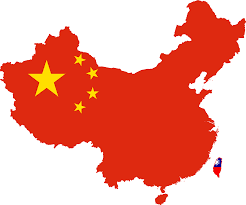Capital seldom announces its intentions. But when a market attracts over US\$90 billion in fresh inflows within six months, the signal becomes difficult to ignore. That is precisely what has unfolded in Hong Kong this year, as mainland Chinese investors have funnelled extraordinary volumes into the city’s equity market. What began as a modest valuation play has morphed into a far-reaching repositioning, with implications well beyond simple performance metrics.
For investors paying attention, the scale and character of this shift merit closer examination. Turnover through the Stock Connect has surged to levels that now account for half of daily volume in Hong Kong, a remarkable increase from just 30% a year ago. This is not merely passive reallocation; it represents a purposeful move toward assets that offer a blend of yield, defensiveness, and strategic alignment with national priorities. The timing is equally notable. While global flows have remained cautious, and some developed markets are showing signs of fatigue, this quiet wave of capital has helped lift the Hang Seng by over 20% year-to-date.
Key sectors drawing interest are those that combine high dividend payouts with embedded resilience. Banking, insurance, and large-cap technology, particularly among dual-listed firms, stand out. Hong Kong-listed Chinese companies now offer average dividend yields well above their mainland counterparts, creating an income advantage that is difficult to replicate elsewhere, especially when sovereign bond yields remain subdued. This has created a compelling entry point for those seeking both yield and asymmetric upside.
At the same time, conditions on the mainland remain mixed. The official manufacturing PMI for June pointed to a third consecutive month of contraction, though the pace of decline has moderated. Early signs suggest that domestic orders and purchasing activity are beginning to stabilise, helped in part by incremental stimulus measures and infrastructure-driven demand. Yet the broader picture remains fragile. Price softness, employment pressure, and uncertainty in global demand continue to weigh on sentiment. Without more decisive policy action, the momentum could prove short-lived.
In contrast, Hong Kong’s listed universe provides exposure to many of the same corporate champions, but at valuations and yield levels that reflect years of underperformance. The valuation gap between H-shares and A-shares has narrowed, but still leaves room for further normalisation. For foreign investors wary of direct mainland exposure, this channel offers a liquid, transparent, and increasingly institutionalised route to participate in China’s evolving economic narrative.
The strategic implications are clear. As the mainland works through a structural shift from manufacturing and investment-led growth to a more consumption-oriented model, near-term volatility should be expected. However, the capital flowing into Hong Kong suggests that many investors are opting to stay engaged with China, just through a different lens. Rather than retreat entirely, they are repositioning toward vehicles that offer both insulation and optionality.
This bifurcation presents opportunity. Investors willing to look beyond headline data may find that the most attractive China exposure is no longer onshore. Hong Kong has become the arena where capital, policy alignment, and valuation appeal converge. And as liquidity dynamics shift further in favour of risk assets—amid anticipated global rate cuts and a stabilising yuan, the rationale for participation only strengthens.
Hong Kong-listed Chinese companies are drawing record mainland investment thanks to attractive yields and discounted valuations. Meanwhile, the mainland’s own recovery remains uneven, with modest signs of improvement but ongoing pressure. For investors, the divergence opens up differentiated strategies with asymmetric potential.
Fidelity China Special Situations PLC (LON:FCSS), the UK’s largest China Investment Trust, capitalises on Fidelity’s extensive, locally-based analyst team to find attractive opportunities in a market too big to ignore.







































